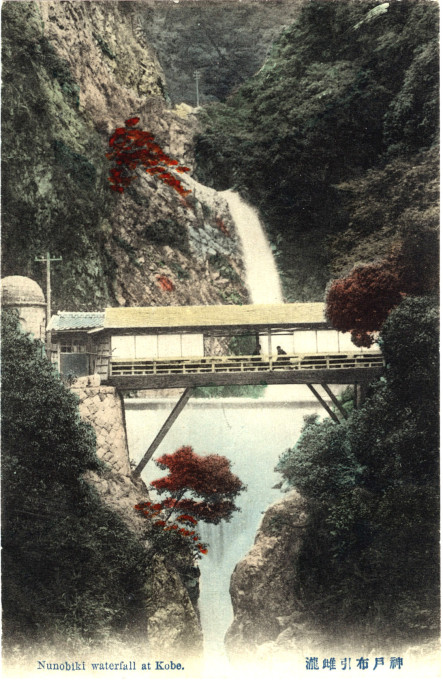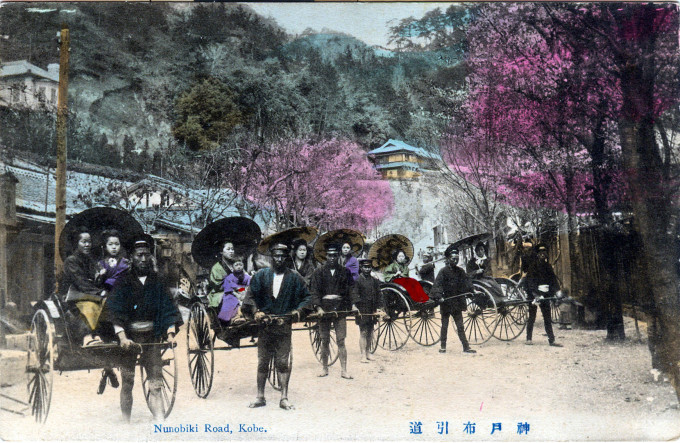
“Nunobiki waterfall at Kobe”, c. 1910. The name Nunobiki can be translated to “cloth stretched out to dry,” literally, a sheet of water falling resembling a piece of white cloth. There are actually two waterfalls: the upper one is called Odaki (Male fall), and the lower Medaki (Female fall).
“The Nunobiki Waterfalls are about 20 min. from the Kobe foreign settlement. The path first reaches the Men-daki, or ‘Female Falls,’ 43 ft. high; then passing through a tea-house and under a covered bridge, it climbs to other tea-houses commanding a view of the upper, or ‘Male Fall’ (On-daki), 82 ft. high. Paths lead down to the bottom of each fall, and it is possible to bathe at certain hours of the morning.
“Large monkeys are occasionally seen in the neighbourhood. Ladies are advised to visit Nunobiki under the escort of gentlemen, as the tea-houses are apt to be noisy. A good view of Kobe and the surrounding country may be had from Sunago-yama, a detached hill near the fall. There is a tea-house at the top.”
– A Handbook for Travellers in Japan: Including the Whole Empire from Yezo to Formosa, by Basil Hall Chamberlain, 1901</blockquote
“We then took rickshaws to the Tor Hotel, very picturesquely located on a hill and surrounded by park-like grounds. There we had tea and after resting a while bargained with a rickshaw man to take us for a ride to the famous falls (Nunobiki Falls) and then to a temple. This ride took us through some little narrow streets not more than alleys wide enough for the rickshaws. It gave us a chance to look into the backyards that seem universally clean and scrubbed and all very quiet.
“… The falls are to be found in a park similar to Schmitz Park only with oddly worded signs in English to direct visitors. There were also little shops to attract the gullible tourist and one group painting china by hand. I understand Kobe is quite famed for china and pottery so they make every effort to feature that industry.”
– Healing, Romance & Revolution: Letters from an American Nurse in 1921 China, edited by Carolyn & Dennis Buckmaster, 2014


